As there is product differentiation between firms in a monopolistic competitive market, a perfectly elastic demand is not available to the firm for its products. Each firm can determine its product’s price, and thus each firm is termed a price maker. Now, we will come to know about the price and output determination in monopolistic competition. Generally, a firm’s demand curve for its products is downward sloping. Also, with lesser product differentiation compared to competitors, the car will have more elasticity.
Conditions for the Price and Output Determination in Monopolistic Competition Equilibrium of an Individual Firm
The price and output determination in monopolistic competition and equilibrium conditions of an individual firm may be as follows:
- Marginal Cost = Marginal Revenue, and MC = MR
- There must be an intersection of the MR curve and MC curve from below.
Short-Run Price and Output Determination in Monopolistic Competition and Equilibrium of the Industry
The analysis in the short-run of the firm under monopolistic competition is based on some assumptions. These assumptions are as follows:
- There are large numbers of sellers who act independently of each other. These sellers are monopolists in their sphere.
- Each seller’s product shows differentiation from other products.
- A firm attains a determinate elastic demand curve (AR).
- A perfectly elastic supply of factor services to produce the question product.
- Each firm’s short-run cost curves differ from each other.
- There is a restriction to entering new firms in the industry.
Explanation
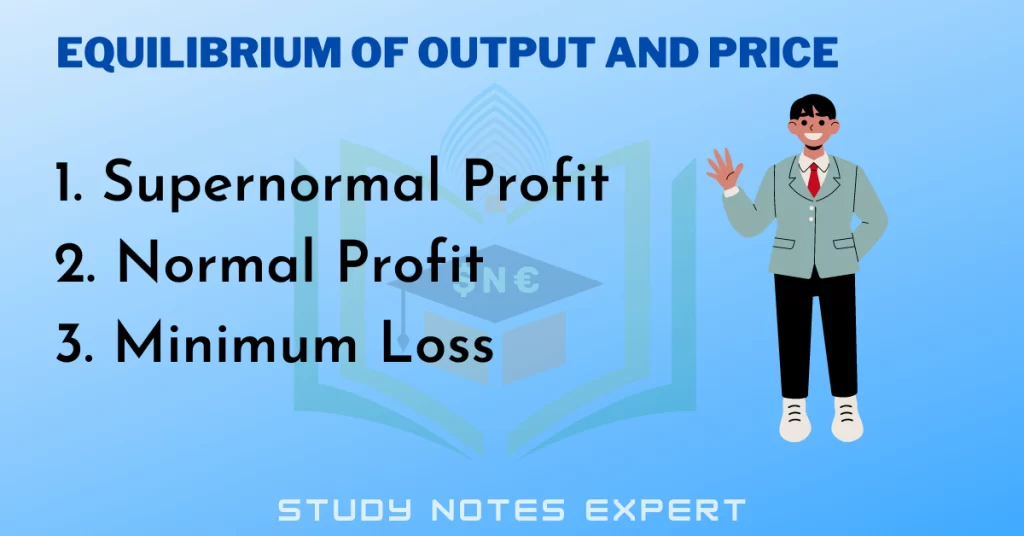
Under these assumptions, each firm’s price and output are fixed to maximize profits. There is an equilibrium point of price and output at which the Short-Run Marginal Cost (SMC) equals marginal revenue. Since, in the short-run Price and Output Determination in monopolistic competition, there is a difference in cost, the firm with lower unit costs earns only average profits. There will be a loss if it can cover the average variable cost.
1. Supernormal Profit
In figure 6.18, the SMC (short-run marginal cost) curve cuts the MR curve at point E. This point E shows the output OQ and price QA (= OP). This results in the firm earns supernormal profit, represented by the area PABC.
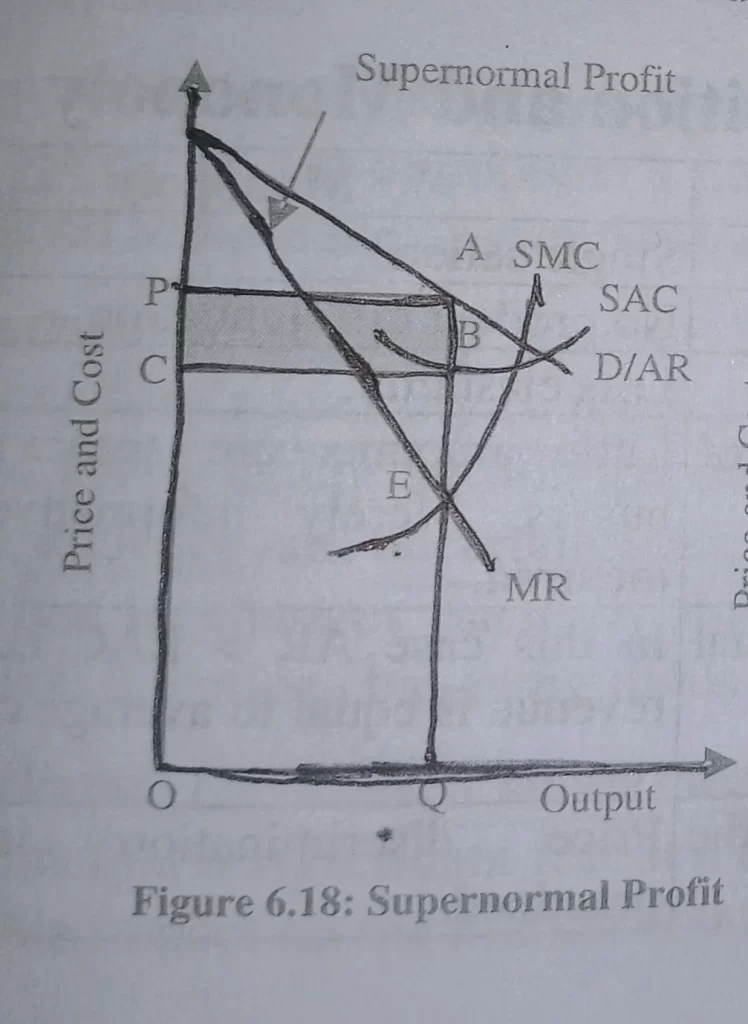
2. Normal Profit
Figure 6.19 shows the same equilibrium of output and price. But the firm only covers the short-run average unit cost in this case, as shown by the demand curve D’s tangency and the short-run average unit cost curve SAC located at A. It earns an average profit.
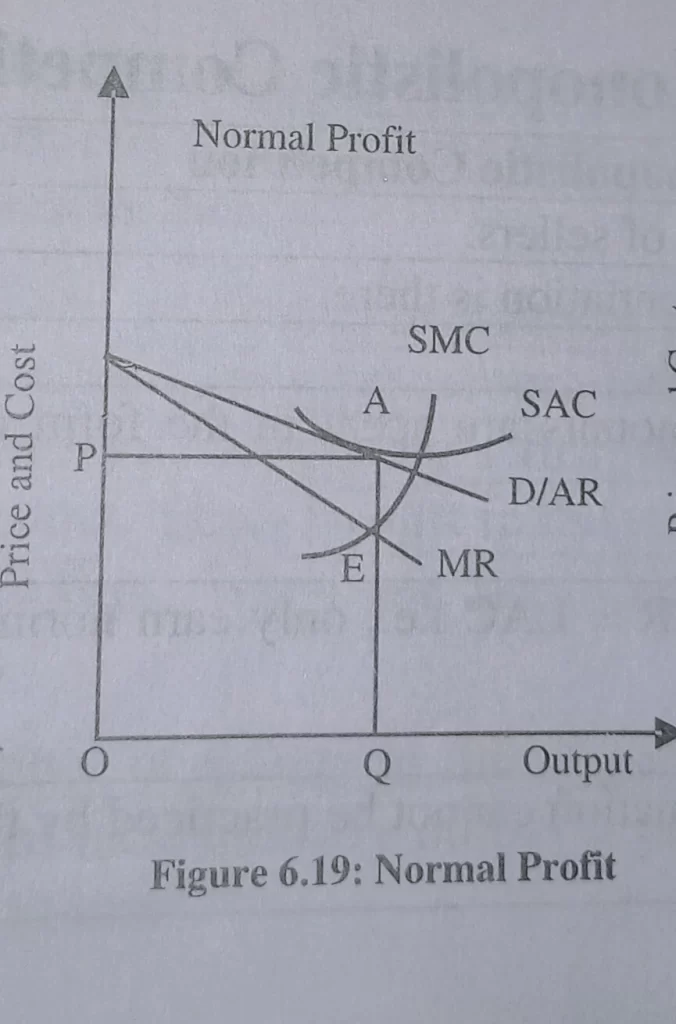
3. Minimum Loss
Figure 6.20 represents a condition where the firm cannot cover its short-run average unit cost and thus incurs losses. The equality of MR and SMC curves helps to set the price at point E, and the price is QA which occupies the average variable cost only. At point A, the tangency of AVC (the average variable cost curve) and the demand curve D make it a shutdown point.
When the price is lowered below QA by the firm, then the firm will stop further production. However, there will be a loss to the firm at this price equal to area CBAP during the short-run in the hope of cost lowering in the long run. It is the price and output determination in monopolistic competition.
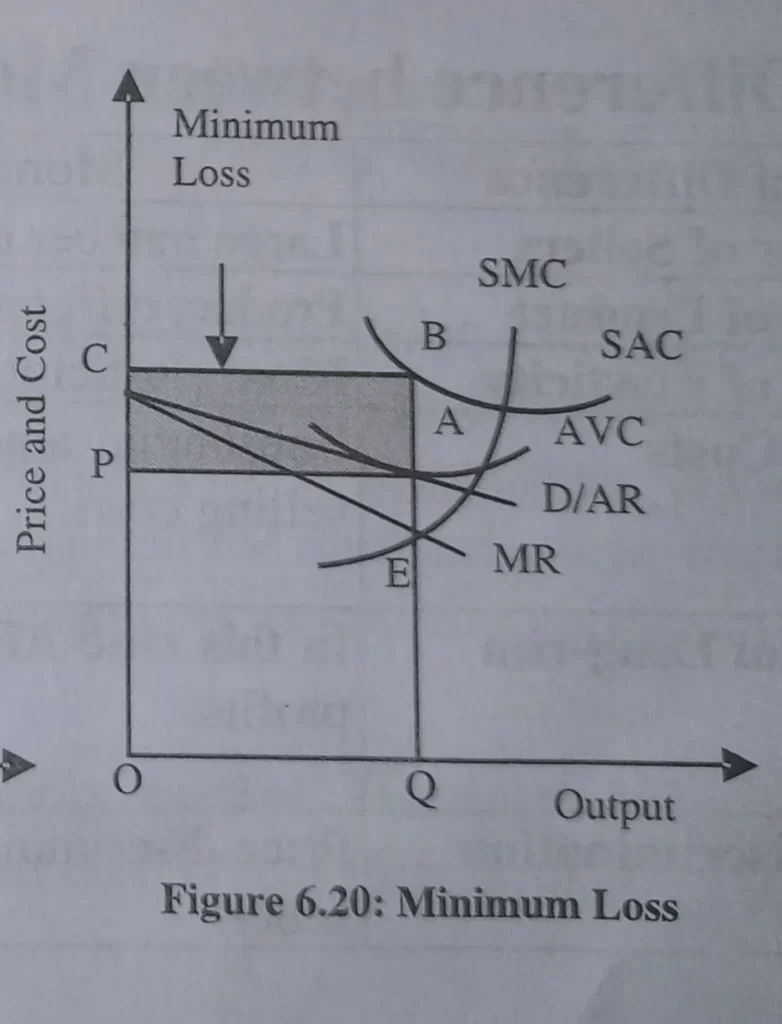
Long-Run Price and Output Determination in Monopolistic Competition and Equilibrium of the Industry
There is exit and entry of the firms in the long run in a monopolistic competitive industry. The process of adjustment will lead to the existence of average profits only. In the long run, this is a realistic assumption for price and output determination in monopolistic competition that no firm can incur losses or earn supernormal profits. It is because of similar products in the market.
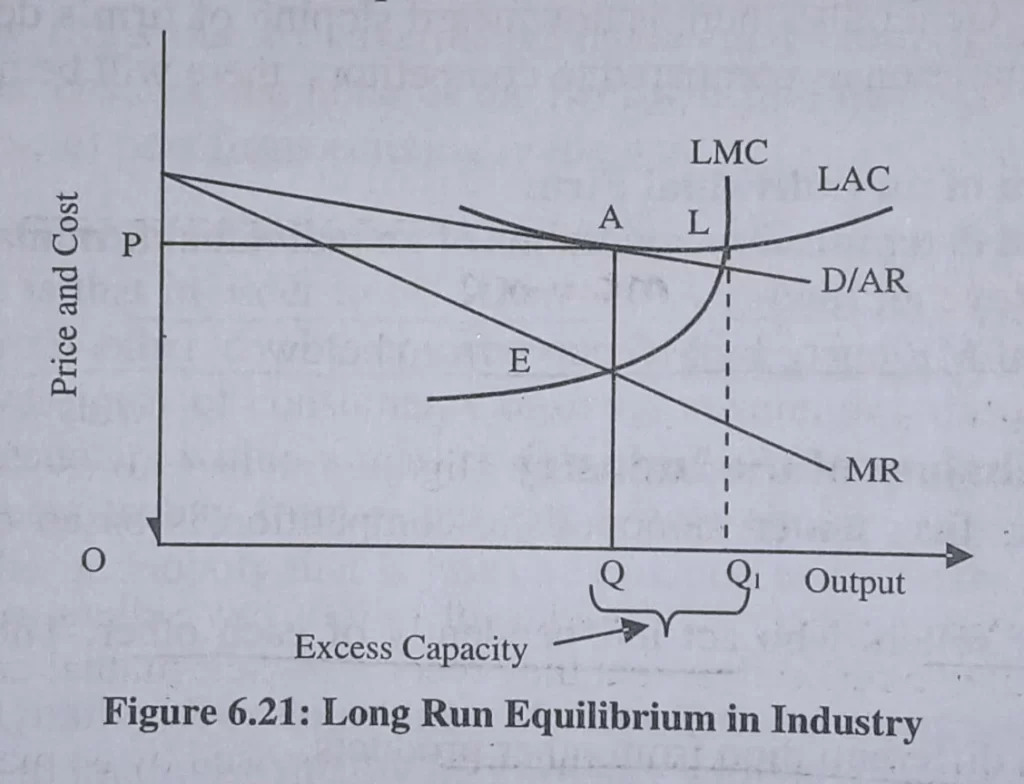
In a monopolistic competitive industry, if the firms in the short-run earn supernormal profits, there will be an incentive to enter new firms. Profits per firm will keep decreasing with the entry of more firms as there will be sharing of product demand among many firms. It happens till wiping off all profits, and then all firms earn only average profits.
Thus, it is clear that all firms will earn only average profits in the long run. In figure 6.21, in the long run, all firms are at equilibrium at point E where (1) LMC = MR, (2) MR is cut by LMC from below, and the curve LAC is tangent at point A to the D/AR curve. Since at point A, price-QA = LAC, average profits are earned by each firm, and there is no tendency for firms to enter or exit the industry.
How are Prices Determined in a Monopolistic Competitive Market?
Monopolistic competition is the marketplace where there are large number of sellers but less in comparison to the perfect competition. There is a product differentiation of products. All the firms are price makers. Prices in a monopolistic competitive market are determined by the interaction of supply and demand.
What is the Main Difference between a Monopoly and Monopolistic Competition?
The main difference between both terms is that monopolistic competition is characterized by an industry with many firms, differentiated products, and easy entry and exit, while monopoly is a single firm with high barriers to entry. Learn deeply about monopoly market and monopolistic competition.

